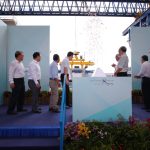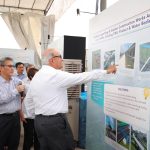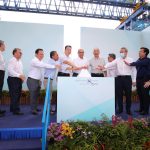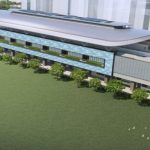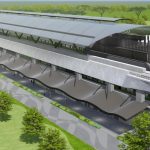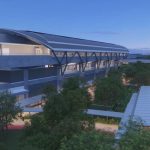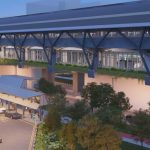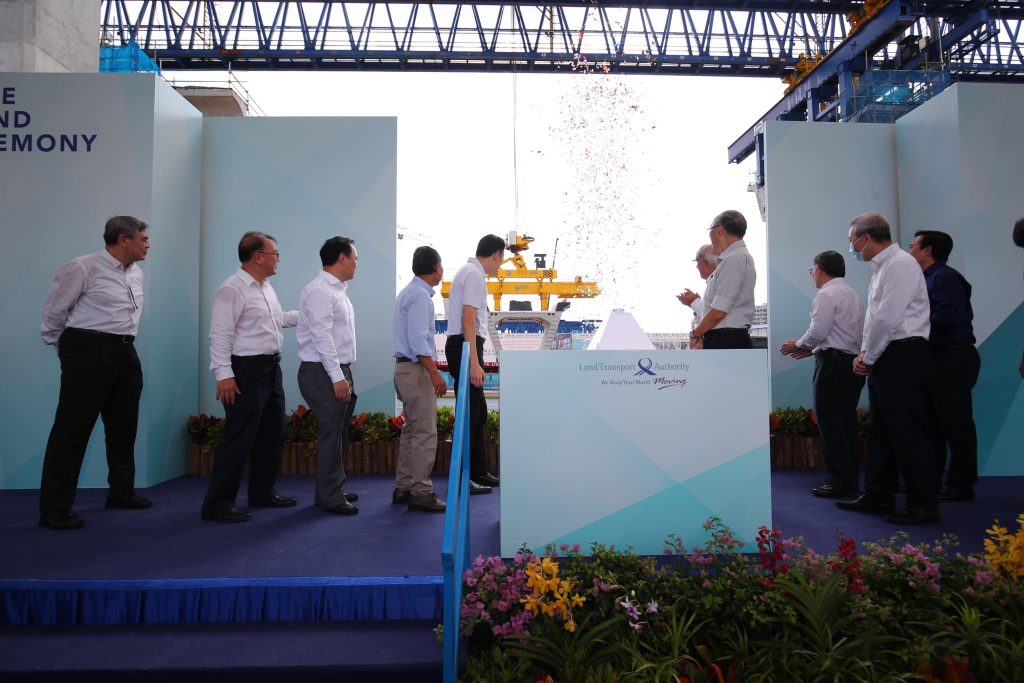 Singapore’s Land Transport Authority and the Minister for Transport S. Iswaran held a ground-breaking ceremony for the construction work for the Jurong Region Line (JRL) at the future Tengah Town.
Singapore’s Land Transport Authority and the Minister for Transport S. Iswaran held a ground-breaking ceremony for the construction work for the Jurong Region Line (JRL) at the future Tengah Town.
The line will be 24 km long with 24 stations including three interchange stations at Boon Lay, Choa Chu Kang and Jurong East.
Constructing the JRL through a mature and densely developed corridor is challenging as works are carried out along an alignment with curves and limited space over busy roads, major expressways and canals. Slightly narrower and shorter carriages will enable the train to negotiate and manoeuvre through these curves at built-up areas along the JRL track.
As the JRL is designed to navigate through existing developments, minimising noise disturbance is a key design consideration. Thus, permanent noise barriers will be installed along viaducts that are near residential areas.
In 2022, LTA awarded a Siemens Mobility consortium the contract for the power supply system and the last station and viaduct construction contract worth USD 279.5 million was signed in May.
As LTA is committed to reducing the environmental impact, all JRL stations will be fitted with photovoltaic (PV) solar panels, generating renewable energy for station operations. The PVs will help reduce carbon footprint of JRL operations by providing a constant source of power with little to no greenhouse gas emissions. In addition, JRL stations are designed to allow crossflow natural ventilation to reduce mechanical energy usage from fans and air-conditioning.
The line will be operated by 62 fully-automated, driverless three-car trains that can be expanded to four-cars as commuter demand increases. The JRL is expected to add more than 60,000 additional households within a 10-minute walk from a train station. It will connect residential areas including Gek Poh and Pandan Gardens to key activity nodes in Jurong that currently do not have direct links to the MRT network such as the Jurong Industrial Estate, Jurong Innovation District and Nanyang Technological University (NTU).
The line will also support the development of the Jurong Lake District, which is set to be the largest commercial hub outside the Central Business District.
The JRL’s ridership is expected to reach 200,000 daily in the initial years and rise to more than 500,000 a day when the Jurong Innovation District, Tengah Town and Jurong Lake District are fully developed
Jurong Region Line (JRL) will be opened in three stages from 2027 to 2029 when will significantly improve connectivity in the western part of Singapore and support developments in the Jurong area.
Passengers can expect substantial time savings when travelling to the Western part of Singapore with the JRL.
Share on:



